Are You at Risk for AAA—the Silent Killer?
The aorta is the largest blood vessel in your body. If an aneurysm, or weakness, in the aortic wall bursts, it can lead to a life-threatening emergency. Learn about the risks and available treatments at Virtua.
By Michael Lieb, DO, FACS, FSVS, RPVI, Vascular Surgeon—Virtua Surgical Group - Hainesport
If your circulatory system was like our state’s highways and byways, the aorta would be the New Jersey Turnpike.
The largest blood vessel in the body, the aorta runs from your heart through the center of your chest and abdomen. While built to last, its roadway can buckle and need emergency repair.
If the aorta’s wall develops a weak spot, it may bulge and swell like a balloon. This area is called an aneurysm. Like a balloon, the aneurysm can burst and cause life-threatening internal bleeding. Knowing what an abdominal aortic aneurysm is—and whether you’re at risk for it—can be a matter of life and death.
An aneurysm that grows slowly and quietly
An abdominal aortic aneurysm (AAA)—or “triple A,” as it’s called—often grows slowly and silently and isn’t detected until it ruptures.
Symptoms of a ruptured AAA include:
- Sudden, deep pain in the abdomen or back that may spread to the back, legs, pelvis, or buttocks
- Abnormal stiffness in your abdominal muscles
- Clammy or sweaty skin
- Low blood pressure
- Loss of consciousness
If you experience any of these symptoms, get medical attention right away.
Are you at risk?
About 200,000 Americans are diagnosed with AAA each year, according to the Society for Vascular Surgery.
Atherosclerosis (hardening of the arteries), chronic high blood pressure, chronic obstructive pulmonary disease (COPD), elevated cholesterol, peripheral vascular disease, and some types of inflammation can contribute to the weakening of the aorta artery walls and formation of AAA.
You also may have a higher risk if you:
- Have a family history of AAA
- Use tobacco products
- Are a white male
- Are 65 and older
- Are obese
- Have high blood pressure, high cholesterol, or diabetes
- Have a connective tissue disorder
The U.S. Preventive Services Task Force recommends ultrasound screening for AAA in men ages 65 to 75 who have ever smoked.
Is there treatment?
AAAs are usually found when you're being examined for another medical condition. Your health care provider may confirm the diagnosis with an imaging test such as CT scan, ultrasound, or MRI.
Treatment of the aneurysm depends on its size, shape, and location. If it’s small and has a low risk of bursting, doctors will closely monitor it. If it’s larger, you’ll need surgery.
Surgical options include removing the aneurysm and replacing the missing section of aorta with a graft, or tube, made of synthetic material.
Another less-invasive option is to thread a catheter to the aorta and insert a stent graft that rests inside the aneurysm to keep it from expanding.
Focus on prevention
Only a small percentage of people survive a ruptured AAA, so prevention and screening are key. If you’re concerned about your risk, talk with your health care provider about screening and steps you can take to improve your vascular health.
Don’t be left on the side of the road. Work with a Virtua cardiologist to improve your heart health.
To make an appointment, call 888-847-8823.
There's So Much More to Explore
Discover expert insights, inspiring stories, health tips, and more by exploring the content below!

Are You Eating Too Much Salt? High-Sodium Foods to Watch For

4 Exercise Tips to Help You Reverse High Blood Pressure

Timely Heart Care During a Heart Attack Helps Joe Feed the Community

3 Reasons Why Now's the Time to Find Relief From Varicose Veins

HeartTalk Magazine

Lifesaving Heart Care Creates a 'Bond That's Never Left Us'
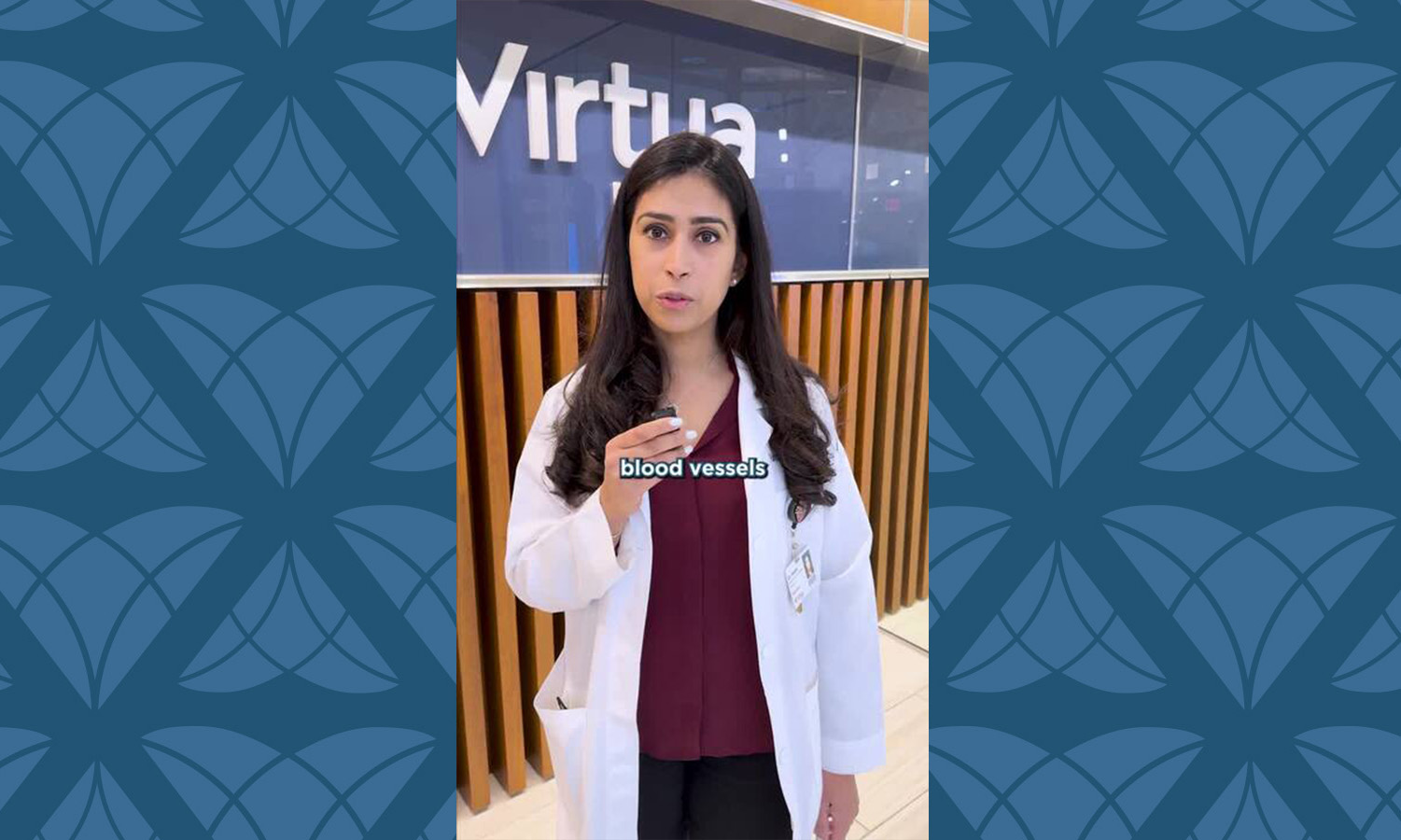
How High Blood Pressure Affects Your Body

5 Interesting Facts About Your Heart

Get to the Bottom of Blood Pressure Numbers
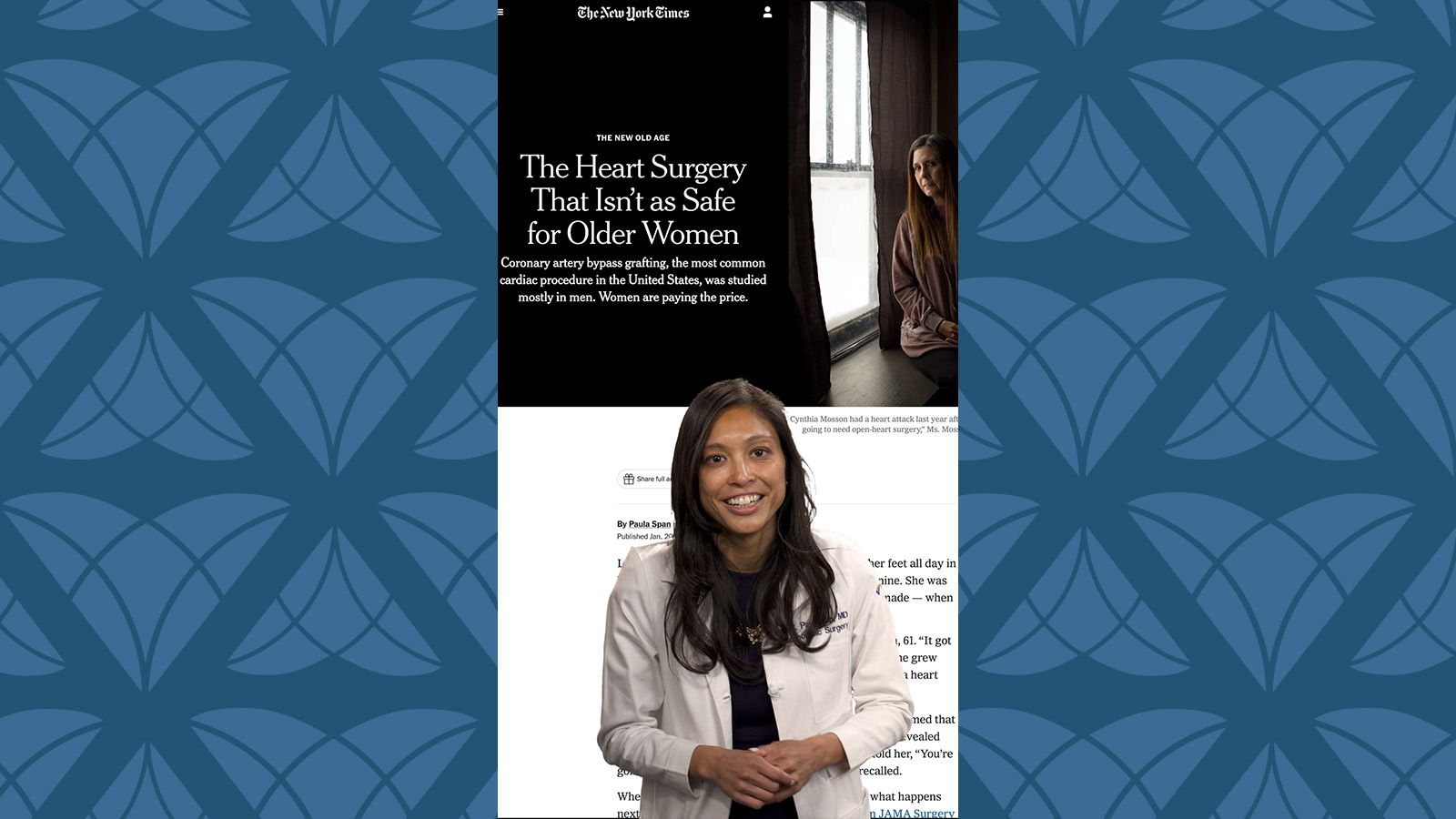
CABG Surgery: What Women Should Know About Heart Health and Healing

When to Take Action for a Stronger Heart

Groundbreaking Renal Denervation Procedure Controls a Lifetime of High Blood Pressure
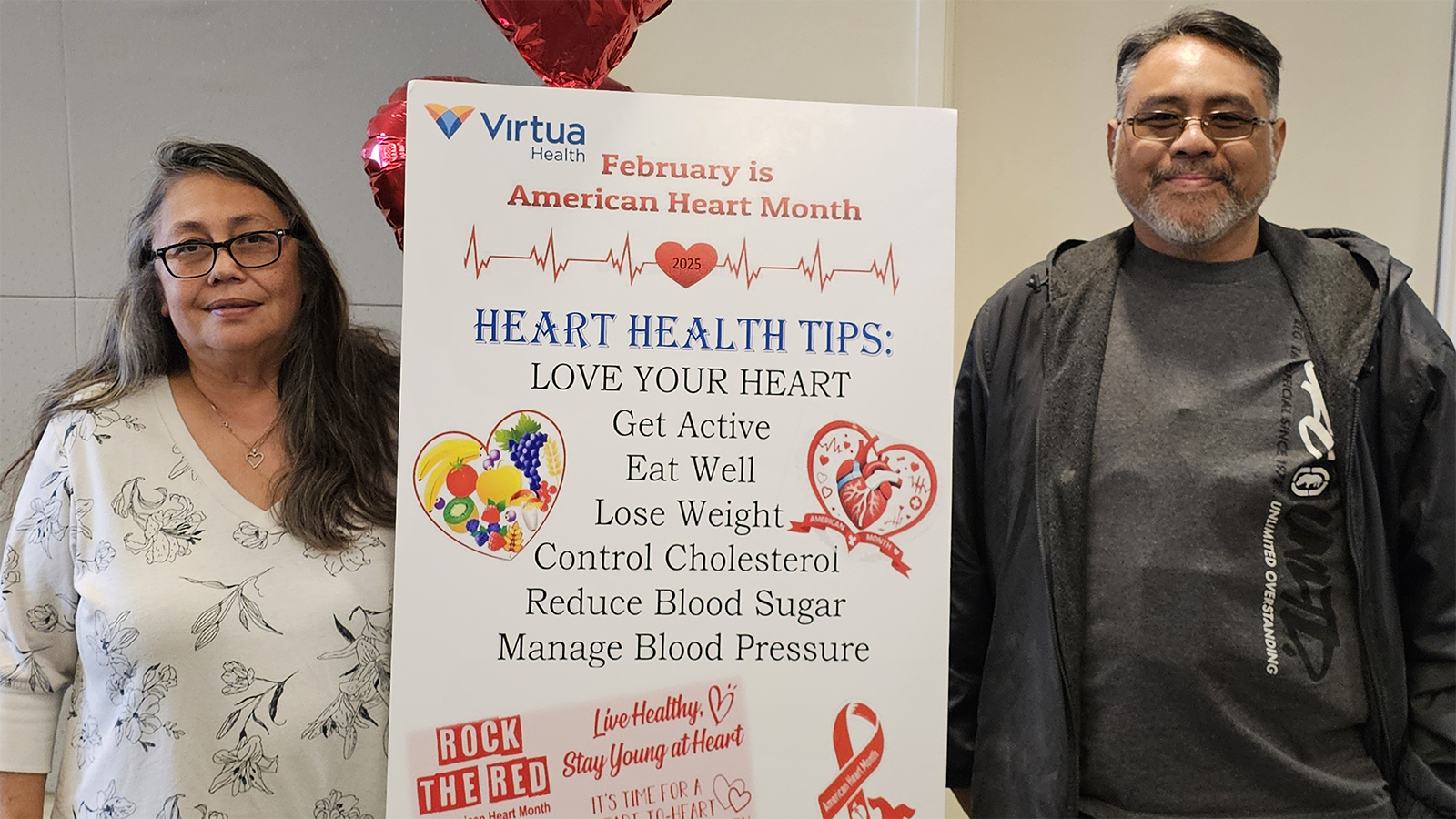
Patient Story: LVAD Mechanical Pump Strengthens Michael's Heart Function

Mitral Valve Surgery Keeps Yaneth Living the American Dream
Inside Look at Blood Vessels Aids PAD Treatment
Denise Davis: Pay Attention to Your Heart Health

Sweet Music: Trust, Teamwork Save Justin from Heart Attack

Complex Heart Surgery Nets James a Lifelong Friend

8 Key Steps to Better Blood Pressure Control

Signs You Should Get Treated For Vein Problems
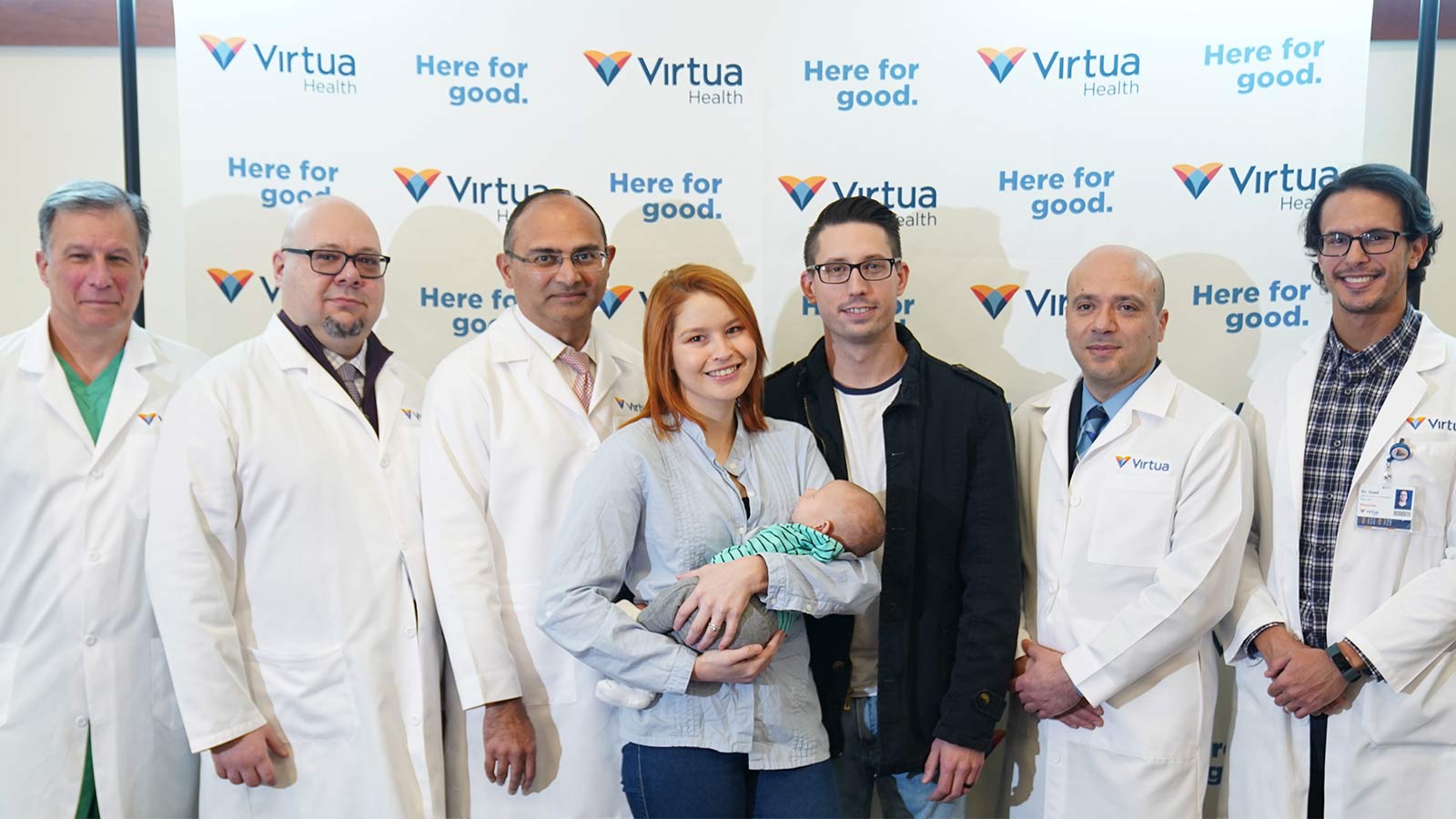
One New Heart Valve Saves Two Lives in the Tritten Family

What You Need to Know About Heart Failure

6 Numbers Key to Keeping Your Heart Healthy

Five Mindfulness Tips That Can Help Heal Your Heart

Watchman Heart Device: a Technological Breakthrough for Blood Clot Prevention
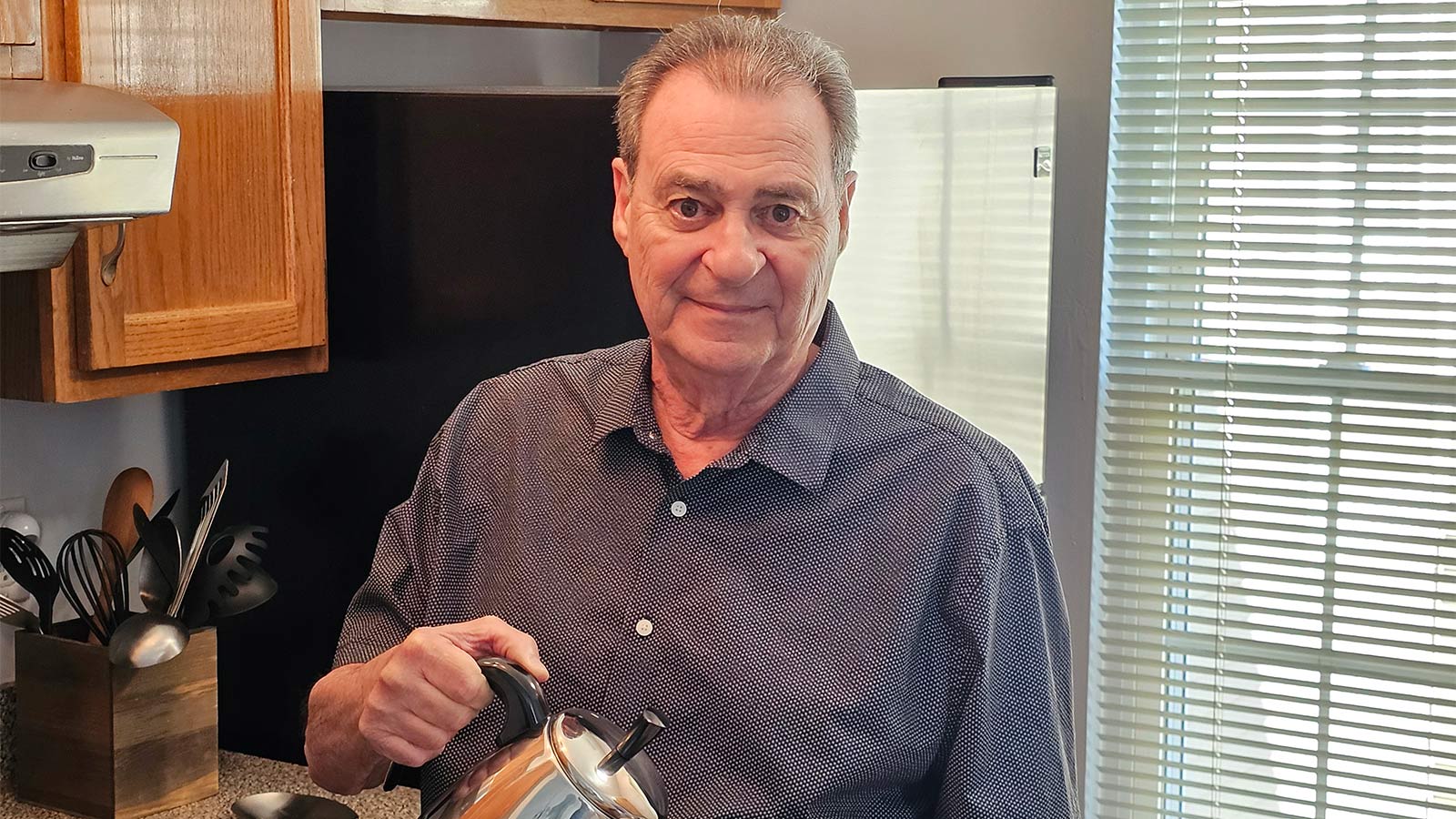
Albert's Emergency Cardiac Surgery Is a 'Story of a Lifetime'

Love Your Heart: Essential Care Tips for Every Stage of Life

How Do I Measure My Blood Pressure at Home?

How Do I Improve My Cholesterol Levels?

3 Ways to Reduce Your Stroke Risk

How the Unique Stages of a Womans Heart Affect Her Health

Can Your Gut Health Affect Your Heart?
Advanced Heart Failure Therapies Get Bernadine Back to Full Speed

Keeping the Beat: Advanced Heart Surgery for Aortic Aneurysm

Heart-Healthy Summer Recipe: Hummus and Veggies

4 Delicious Heart-Healthy Recipes Perfect for Summer

Heart Healthy Summer Recipe: Dessert Parfait

Heart-Healthy Summer Recipe: Pear and Walnut Salad

Heart-Healthy Summer Recipe: Terrific Turkey Burgers
Atrial Fibrillation and Stroke: What's the Connection?
Heart Tests Your Doctor May Order
Managing Pregnancy for Mothers With Heart Conditions

Heart Healthy Recipe: Basil Pesto Pasta With Seared Vegetables

Heart Healthy Recipe Chocolate Avocado Chia Pudding
Keep Your Heart Rhythm in Check With Your Smartwatch
Mind Your Meds for Blood Pressure Risks
Magic Pill for Heart Health? Cut 300 Calories a Day
3 Smart Ways to Boost Your Heart Health
3 Best Exercises For Heart Health

Get Your Heart Pumping With These 25 Workout Songs
Your Chest Pain: Heartburn, Heart Attack, or Something Else?
3 Heart Healthy Recipes to Win Valentines Day
How Work and Home Stress Can Affect You
Why Improving Your Health Is Going To The Dogs And Cats
Why Younger Women Need Start NOW To Safeguard Their Hearts From Heart Attacks
Can You Die of a Broken Heart?
Mitral Valve Surgery Opens Doors for Improved Quality of Life
6 Healthy Habits to Start in Your 20s for Better Lifelong Health
Do You Have a Fatty Heart?
Get Pumped! Assist Devices Can Improve Heart Failure Symptoms
A Cardiologists Advice on Heart-saving Emergency Cardiac Care
Virtua Doctor’s Experience Is a Warning for All About COVID-19 and Strokes
You May Feel Fine, but Gregory Says "Don't Skip Your Medical Care"
In Sickness and in Health: Couples Often Share Heart Disease Risk
"Reduce Your Heart Disease Risk With a Plant-based Diet"
Hybrid Robotic Heart Surgery and Valve Replacement Restores Quality of Life
Can Marijuana Hurt Your Heart Health?
6 Tips for Restoring Your Heart Rhythm
Eat Smart for Your Heart
Cardiac Rehab: Strengthening Your Heart After Leaving the Hospital
Your Heart Needs A Good Nights Sleep
Are You at Risk for AAA—the Silent Killer?
The Cardio Oncology Team Protects Your Heart During Cancer Treatment
Get Relief From Painful Varicose Veins This Summer
Exercise Your Way to a Stronger Heart
Fish Oil: A Good Catch or a Scam?
My Heart Seems to Skip a Beat - Should I Be Worried?
Menu Planning? Try These 5 Heart-smart Substitutions

5 Health Risks Tied to Weight

